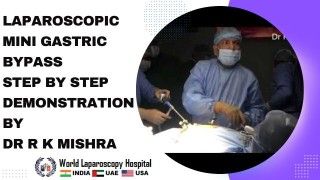Precision and Control: Exploring the Versatile Laparoscopic Forceps
Add to
Share
1,363 views
Report
2 years ago
Description
Laparoscopic forceps are specialized surgical instruments that are used in minimally invasive surgical procedures to provide surgeons with precise control and manipulation of tissue. They are designed to be used through small incisions in the abdomen and are an essential tool for laparoscopic surgeries, including gallbladder removal, appendectomy, and hysterectomy. Laparoscopic forceps are available in a variety of shapes and sizes, including grasping forceps, dissecting forceps, and scissors. They are typically made of stainless steel and are designed with a long, thin shaft that allows them to be inserted through small incisions. The working end of the forceps features two opposing arms that can be opened and closed using a handle at the other end. The laparoscopic forceps provide surgeons with several advantages over traditional surgical instruments, including better visualization of the surgical site, reduced blood loss, less postoperative pain, and a faster recovery time. The use of laparoscopic forceps also enables surgeons to perform more complex procedures with greater precision and control. In addition to their use in laparoscopic surgery, laparoscopic forceps are also used in other minimally invasive surgical procedures, such as endoscopy and arthroscopy. They are a versatile tool that can be adapted to a wide range of surgical procedures, making them an essential part of any surgical team's toolkit. Overall, the laparoscopic forceps are an important advancement in surgical technology that has revolutionized the field of minimally invasive surgery. Their precision and control have made many complex surgical procedures safer, more efficient, and less invasive, helping to improve patient outcomes and quality of life. Laparoscopic forceps are used in a wide range of surgical procedures, including those involving the gastrointestinal tract, reproductive organs, and urinary system. They are particularly useful in procedures that require the manipulation of delicate or hard-to-reach tissue, such as the removal of tumors or the resection of damaged tissue. One of the key benefits of laparoscopic forceps is their ability to provide a 3D view of the surgical site. This is achieved by using a laparoscope, which is a thin, flexible tube with a camera at the end that is inserted through a small incision. The laparoscope provides a magnified view of the surgical site, allowing the surgeon to see the tissue being manipulated and to make precise movements with the forceps. Laparoscopic forceps are also associated with a lower risk of complications compared to traditional open surgery. This is because they require smaller incisions, which means that there is less trauma to the surrounding tissue and organs. As a result, patients typically experience less pain, scarring, and a faster recovery time. However, as with any surgical procedure, there are risks associated with the use of laparoscopic forceps. These can include damage to surrounding organs or tissue, bleeding, and infection. It is important for surgeons to carefully evaluate each patient's individual case and to take all necessary precautions to minimize the risk of complications. In summary, laparoscopic forceps are an essential tool for minimally invasive surgical procedures, offering precision and control that cannot be achieved with traditional surgical instruments. They have transformed the field of surgery and have improved patient outcomes by reducing pain, scarring, and recovery time.
Similar Videos






